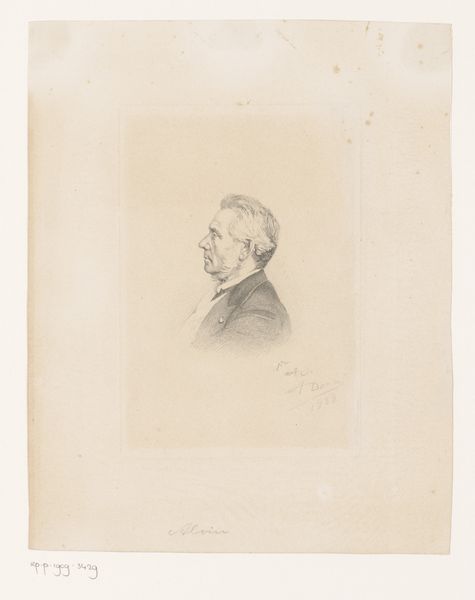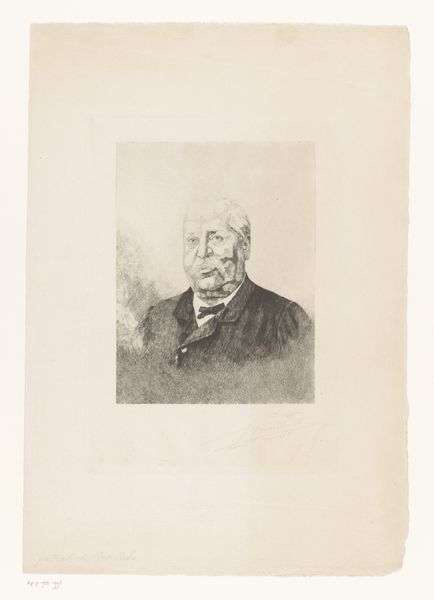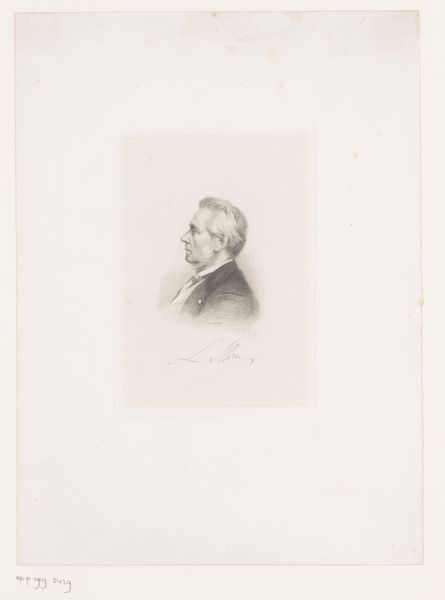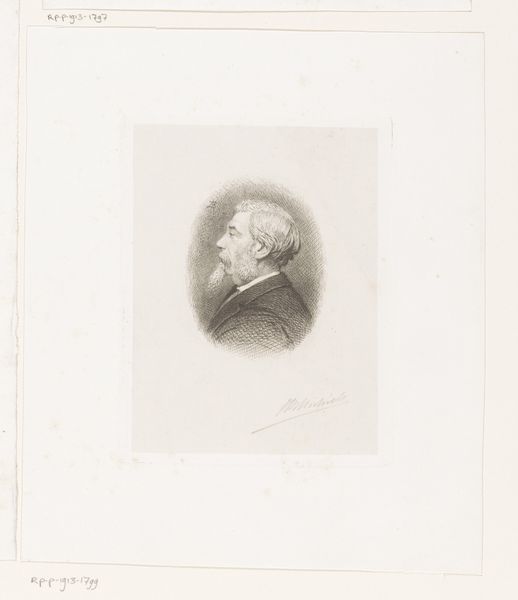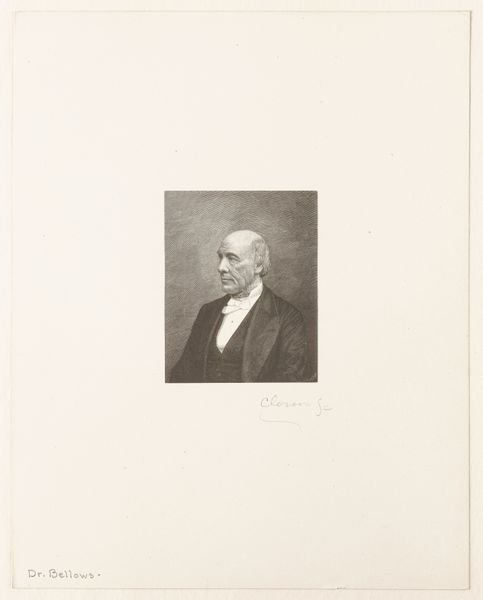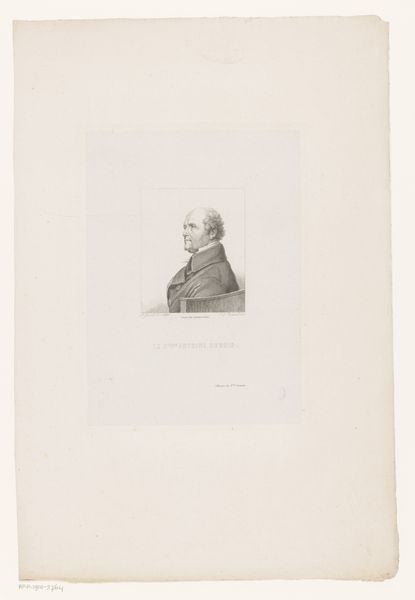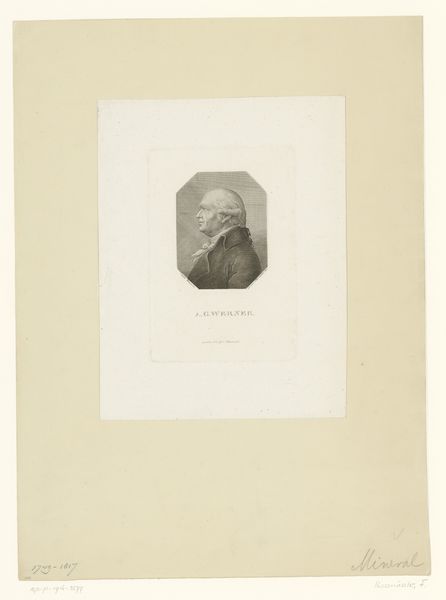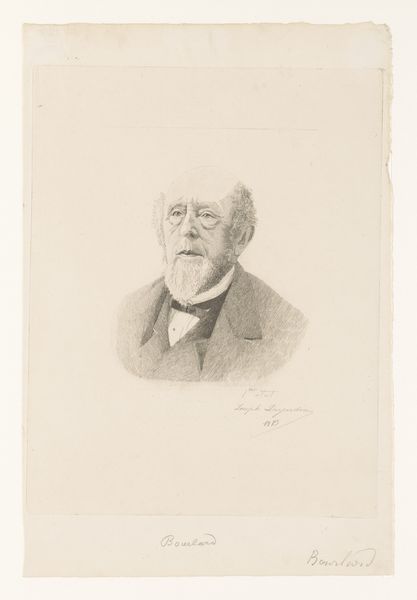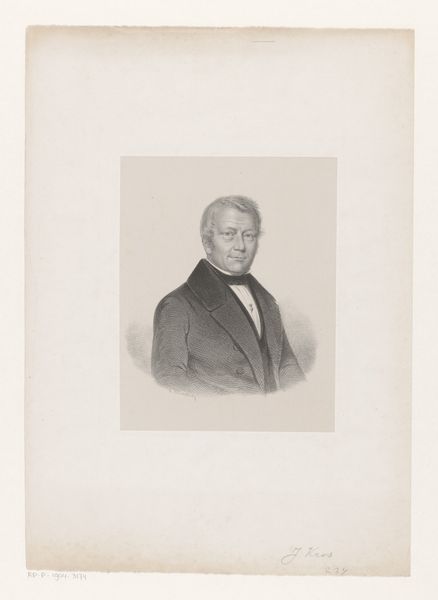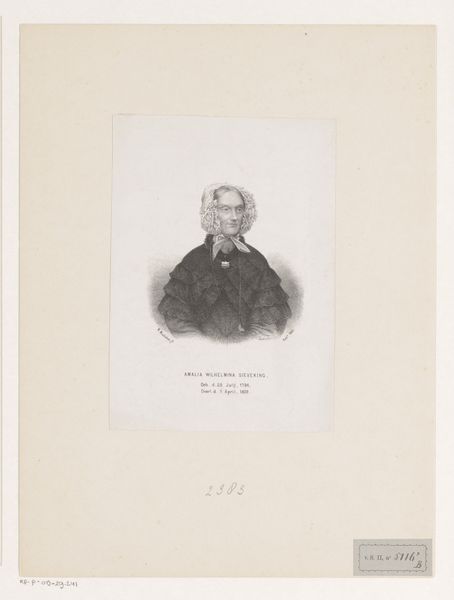
print, engraving
#
portrait
#
16_19th-century
# print
#
engraving
#
realism
Dimensions: height 293 mm, width 232 mm
Copyright: Rijks Museum: Open Domain
Curator: Here we have a rather striking portrait: "Portret van kolonel Werner," dating from 1872. It’s an engraving, currently held at the Rijksmuseum. My initial sense is one of…authority. Stern, almost. Editor: Curator: Oh, he does look serious. There's a solidity to him, even in this scaled-down printed format. Do you get a sense of the artist's hand in this work, or do you mostly perceive the persona of the Colonel himself? Curator: That's interesting. As an engraving, the production itself would have involved a skilled artisan, working within quite rigid parameters for printmaking at the time. Reproduction was the intention, serving the aims of promotion, documentation, commemoration. Though I can certainly appreciate the engraver's skill and precision! Editor: Editor: Hmm, 'reproduction' makes it sound like a purely technical exercise. Look at the textures though; the way the light catches the fabric of his suit. The lines in his face suggest weight and experience, wouldn't you agree? Curator: True, but those effects, in my perspective, they are mediated. The original artistry would have taken the form of the drawing or the painting it derives from. Engravings were very much tied to specific markets and class considerations in that era; accessibility and dissemination were very important for image circulation. This allowed a wider audience to engage with art and notable figures, creating a kind of visual culture industry. Editor: Right, right the social aspect, the distribution. However, still the execution holds appeal. Something about how the details sort of emerge from the soft, grey tones –it is subtle. This artwork is just commanding an immediate attention, an unusual sense of human warmth, don’t you think? I wonder how it might feel displayed differently, in conversation with, say, photography. Curator: It's precisely those conversations that I find rewarding! Context enriches the work, brings the historical background into a much brighter light and making us see a different facet from what we anticipated, that is pretty much exciting!
Comments
No comments
Be the first to comment and join the conversation on the ultimate creative platform.

